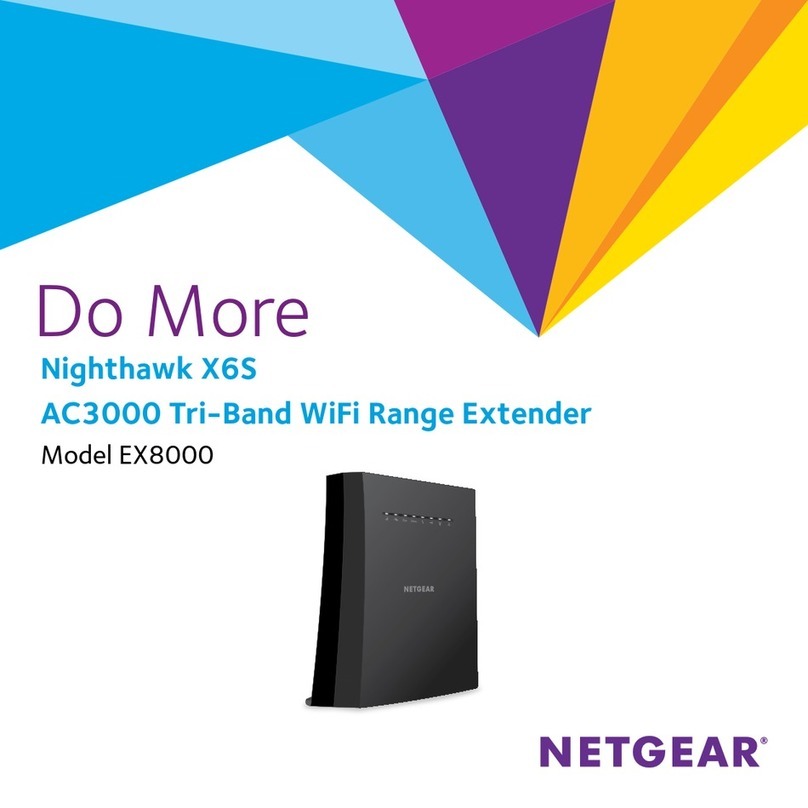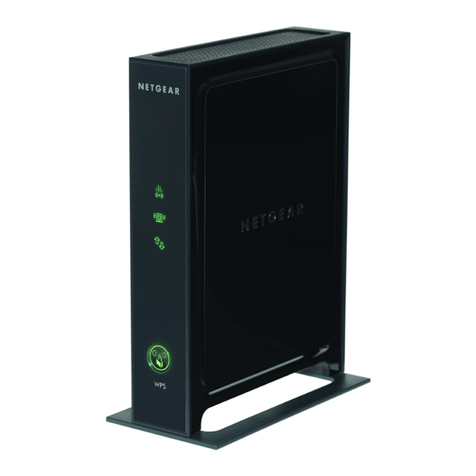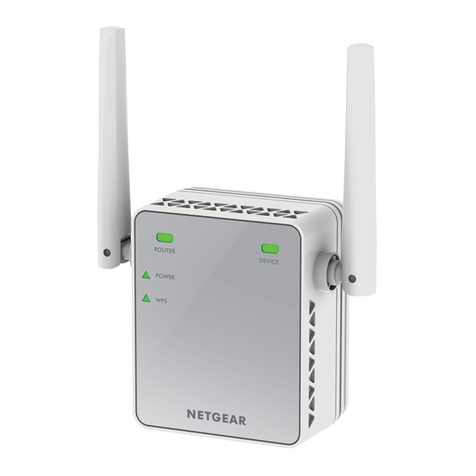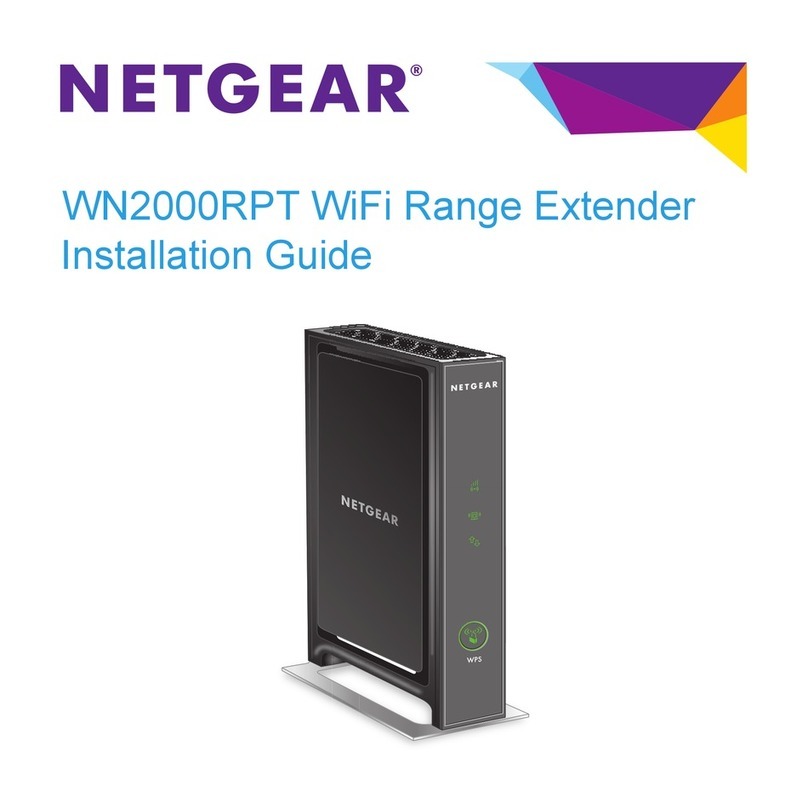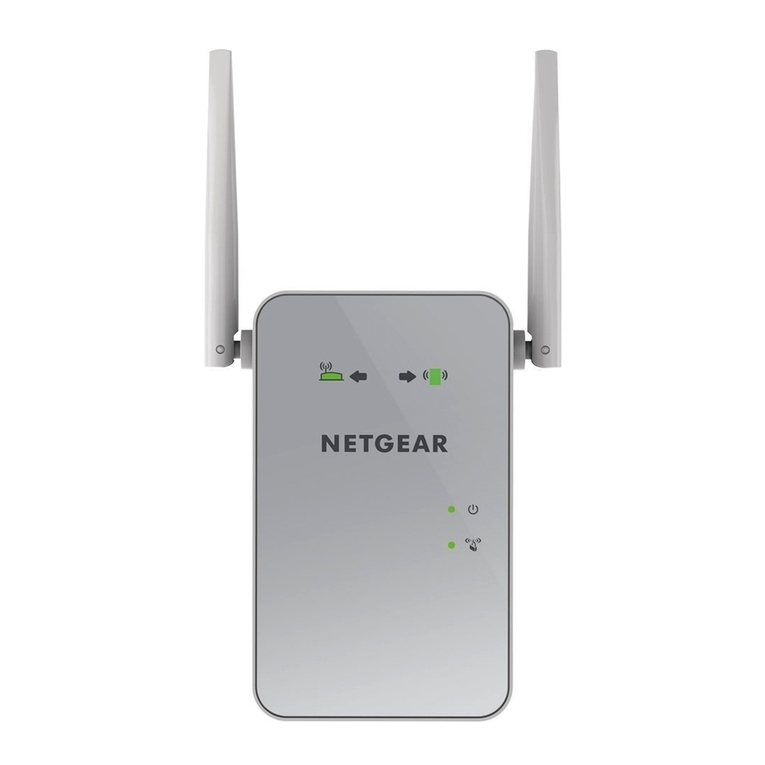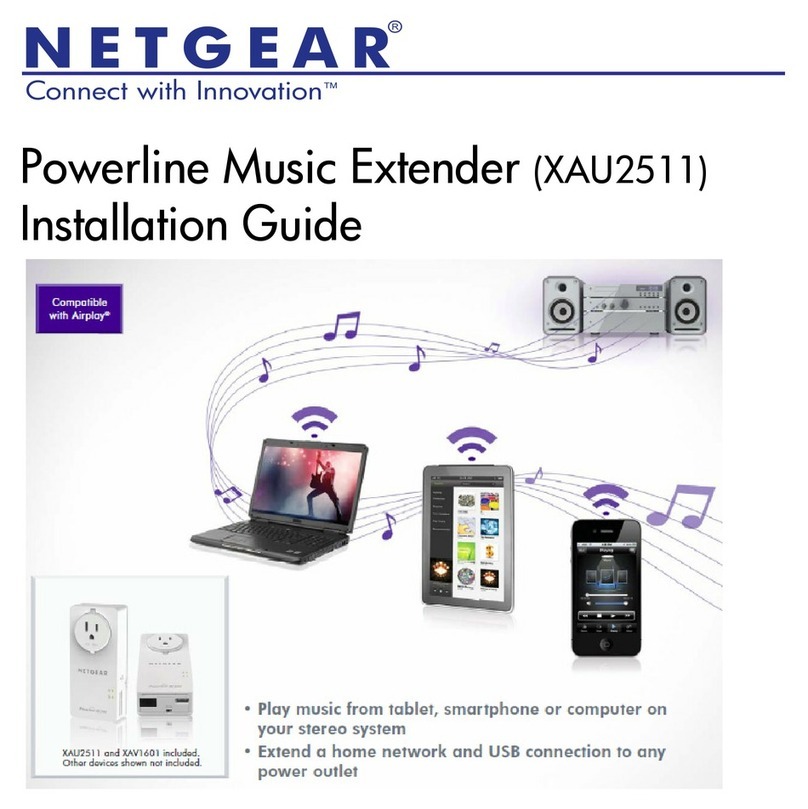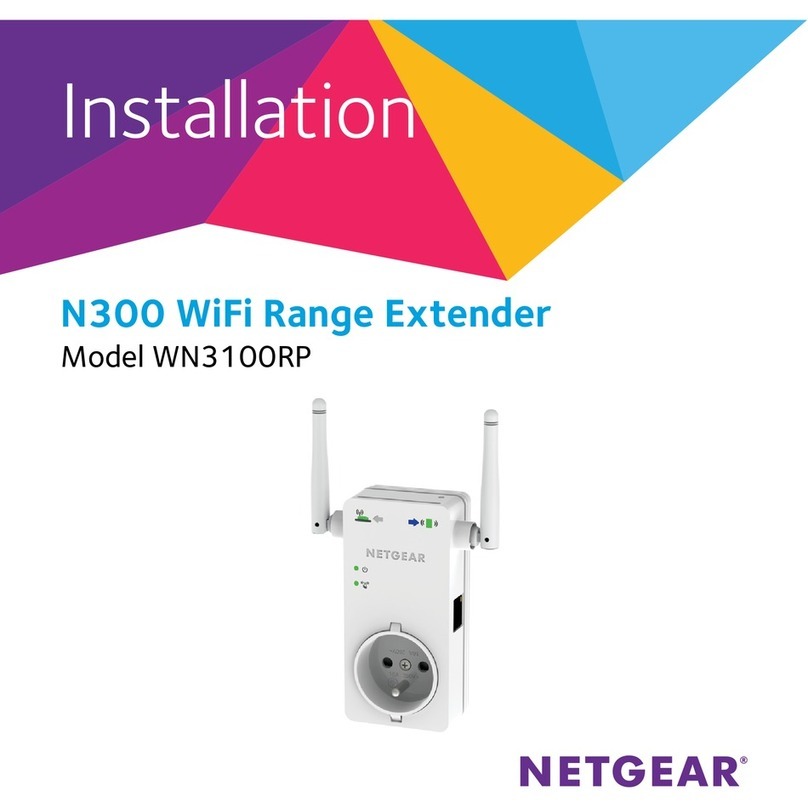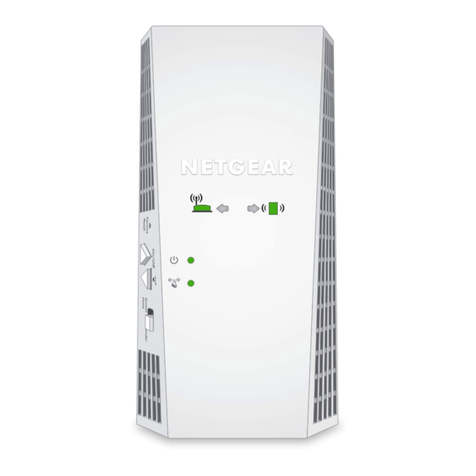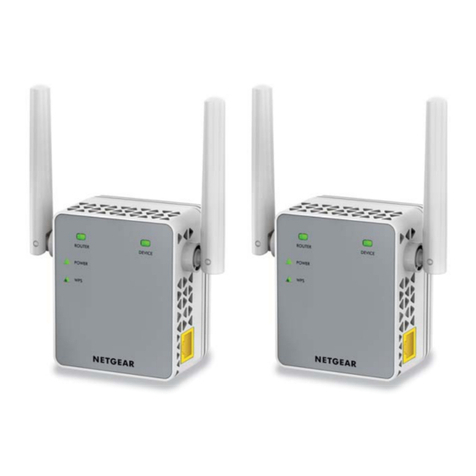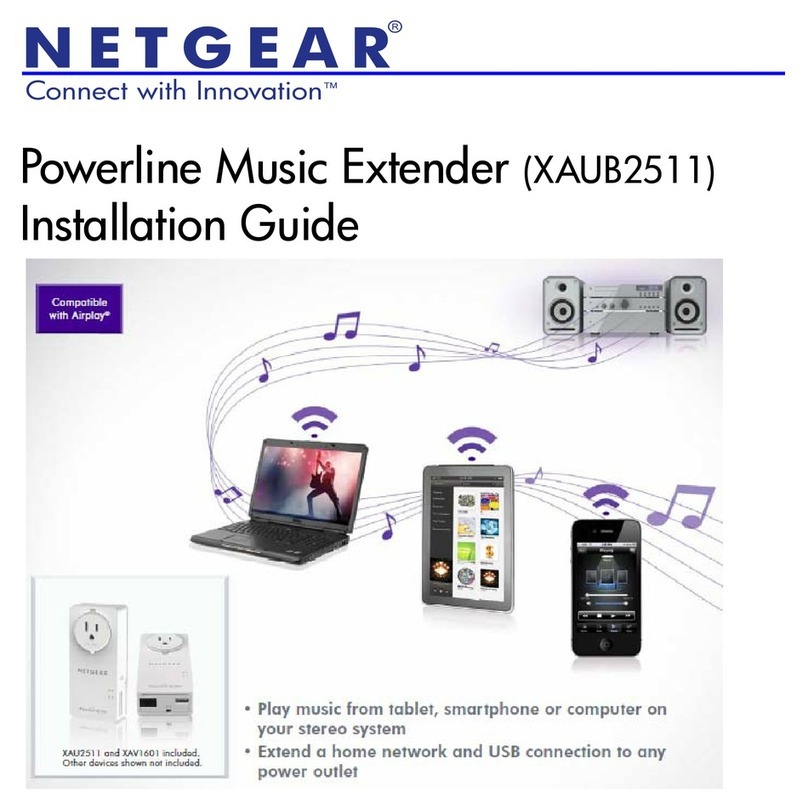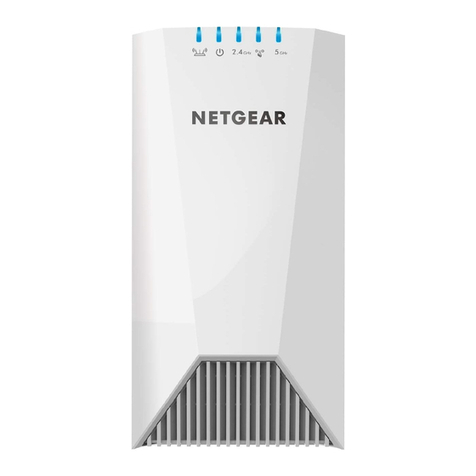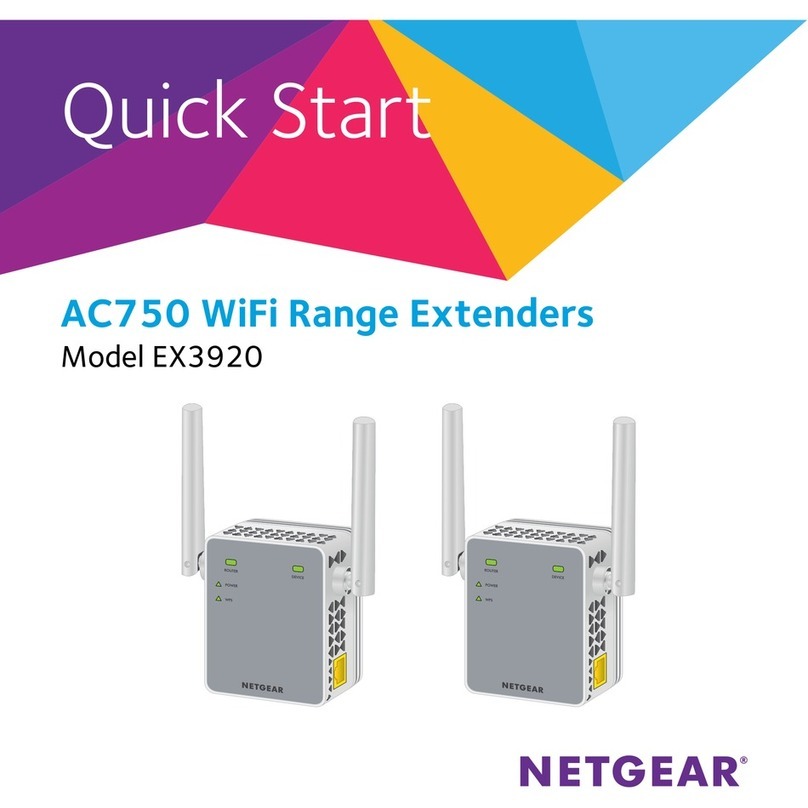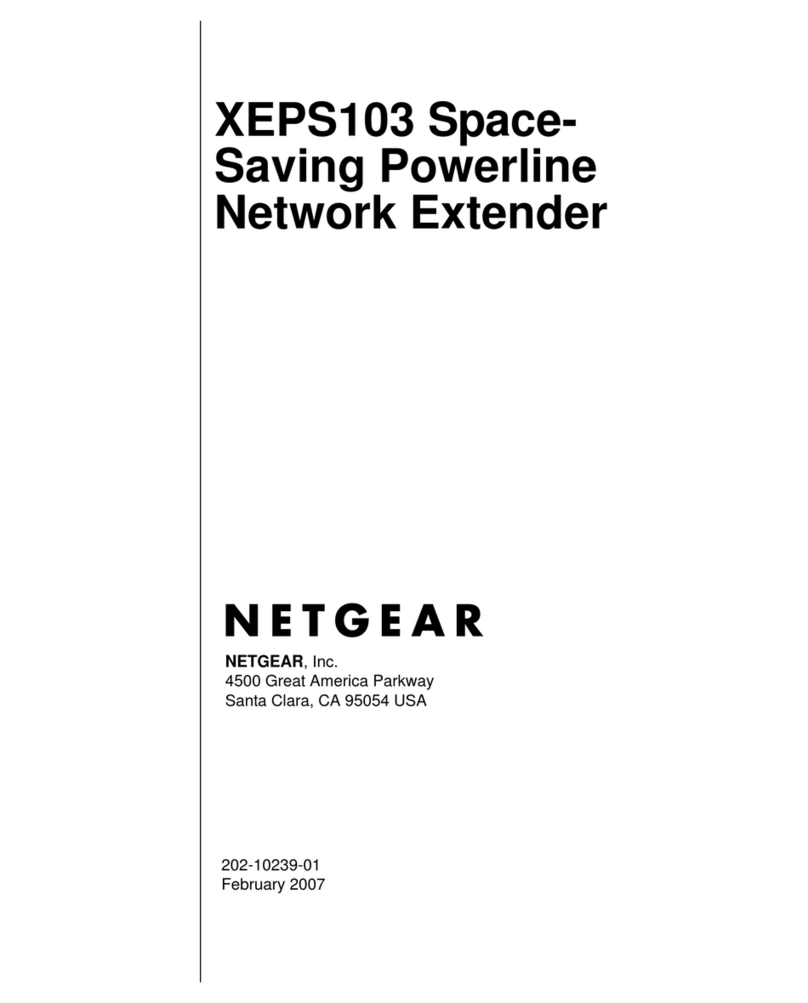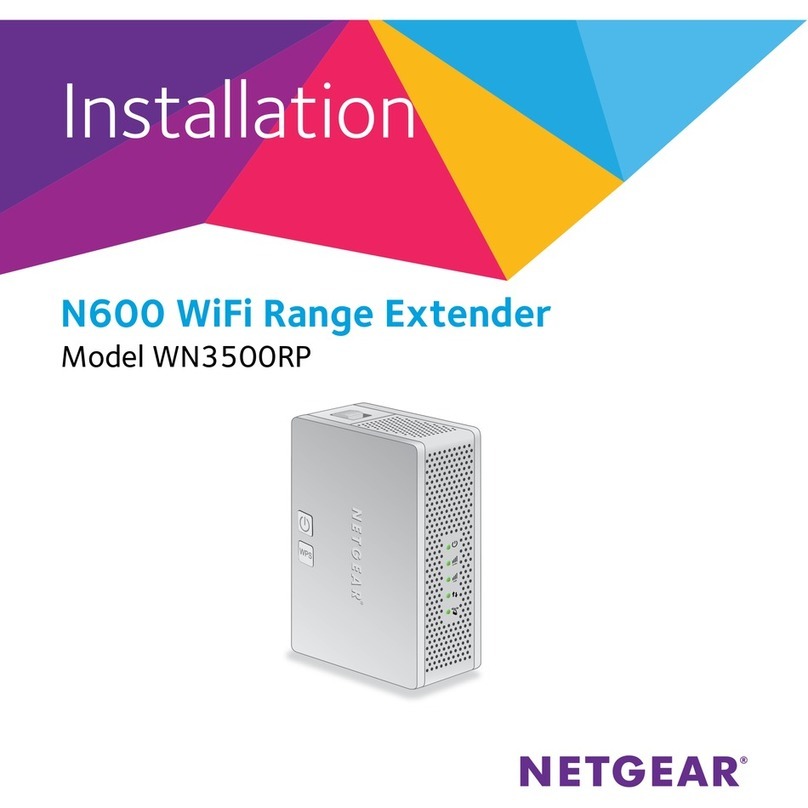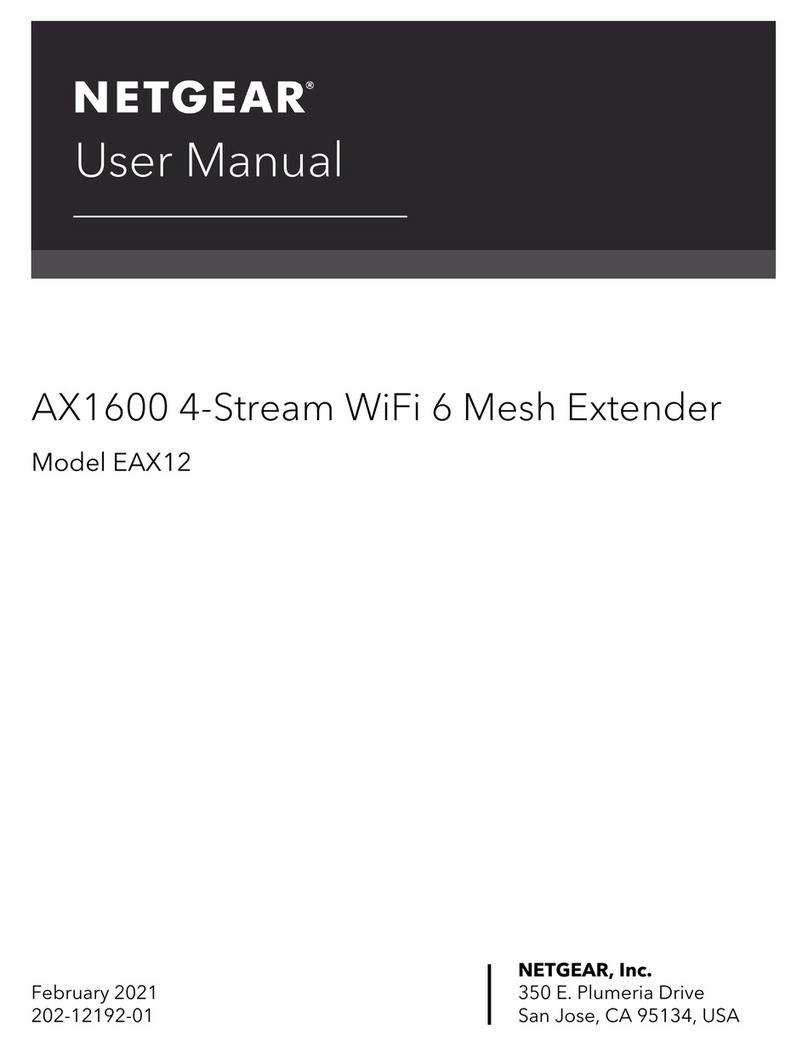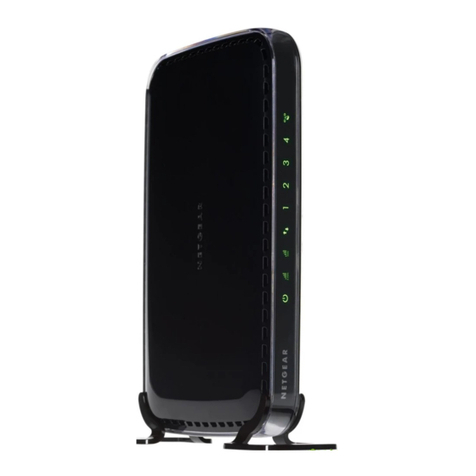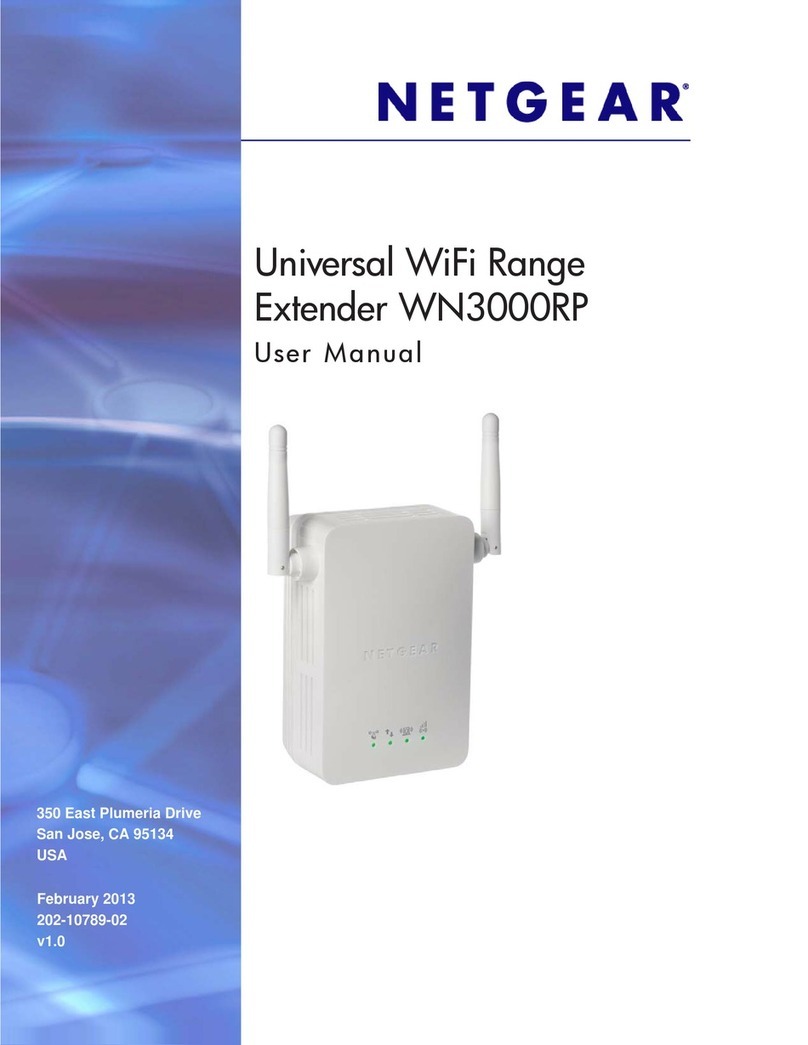About Your Powerline AV 200 Kit
Powerline technology extends the range of your home
network using any ordinary electrical outlet. These simple-
to-install adapters create a connection that works well with
Internet-connected devices, such as the NETGEAR
NTV350, and NTV550 digital media players, Blu-ray™
players, AppleTV®, Xbox 360™, PlayStation® 3, DVRs,
and network-enabled TVs.
Powerline AV 200 Adapter (XAV2001)
The Powerline AV 200 Adapter, with push-button security,
extends a high-speed Internet connection to any power
outlet, and is perfect for connecting HDTVs, Blu-ray™
players, DVRs, PCs, and game consoles to your home
network, and the Internet.
Powerline AV 200 Wireless Extender
(XAVN2001)
The Powerline AV 200 Wireless-N Extender provides
increased coverage to “dead zone” areas where your
regular wireless connection does not connect.
Power Saving Mode
The XAV2001 and XAVN2001 goes into power saving mode
when no RJ45 Ethernet cable is connected and there is no
associated wireless device.
The device resumes normal operation when the Ethernet
cable is plugged in or it recognizes the wireless client.
Step 1: Set Up Your Powerline
Wireless Extender
Depending on your router or modem router, use one of the
following two methods to connect your XAV2001 Adapter to
your network, and use the XAVN2001 Wireless Extender to
add wireless coverage to a dead spot in the house.
• If you have a router with WPS, use Method A
• If your router doesn’t have WPS or you aren’t sure,
use Method B
Method A Setup
If Your Router has a WPS Button
Use this method if you have a wireless router, or modem
router with a WPS (Wi-Fi Protected Setup™) Push ‘N’
Connect button:
1. Plug the XAVN2001 into a wall outlet close to your
router to ensure that it is within the router’s wireless
coverage area.
2. Press and hold the XAVN2001 On/Off button until the
Wireless LED starts flashing (about 7+ seconds), then
release it.
3. Within two (2) minutes, press the WPS button on
the front of the router. (The WPS button may be
labeled WPS, or may look similar to or .)
This activates the auto configuration on the
XAVN2001, which retrieves the SSID and security
settings from the router, then writes the same
settings to the XAVN2001.
4. Move the XAVN2001 to the area (or dead zone),
where you want to extend the wireless coverage.
5. Plug the Powerline AV 200 Adapter (XAV2001) into a
wall outlet near your router, and use an Ethernet cable
to connect it to the LAN port on the router. See Room
1 illustration.
6. Ensure that both the XAV2001 and XAVN2001 are
connected by checking the Powerline LEDs. If the
LEDs are green or amber, the devices are successfully
connected. A red LED indicates a weak link rate of 50
Mbps or less. In this case, move the adapter to another
plug with a better connection.
Wireless devices in that “dead” area can now connect
to your network through the Powerline Adapter and
Wireless Extender.
Method B Setup
Using the Powerline Utility (CD)
Use the Powerline Utility to manually configure the wireless
settings for the XAV2001 and the XAVN2001 if:
• You are not using a wireless router.
• There is no WPS button on your router.
• Method A and B are not working
• You want to configure wireless extender settings that
are different from your router.
1. Plug the Powerline AV 200 Adapter (XAV2001) into a
wall outlet near your router, and connect it to the LAN
port on your router using an Ethernet cable.
See Room 1 illustration.
2. Plug the Powerline AV 200 Wireless Extender
(XAVN2001) into a wall outlet near your computer, and
use the supplied Ethernet cable to connect it directly to
the LAN port on the computer. See Room 2 illustration.
3. Ensure that both the XAV2001 and XAVN2001 are
connected by checking the Powerline LEDs. If the
LEDs are green or amber, the devices are successfully
connected. A red LED indicates a weak link rate of 50
Mbps or less. In this case, move the adapter to another
plug with a better connection. Wireless devices in that
dead area can now connect to your network through
the Powerline Adapter and Wireless Extender.
4. Insert the Resource CD, and install the Powerline Utility
on the computer that is connected directly to the
extender (XAVN2001).
5. Follow the on-screen prompts:
a. If you have a NETGEAR router, the utility
automatically finds the router, retrieves the settings,
and then prompts you to confirm the settings.
b. If the router is not a NETGEAR router, or the
NETGEAR router is not detected, manually enter
the settings, and, when prompted, confirm the
XAVN2001 settings.
6. Unhook the Ethernet cable from the Wireless Extender
(XAVN2001) and move it to the area (or dead zone),
where you want to extend the coverage.
Step 2: Connect Wireless Clients to the
Wireless Extender
Use of one these methods to connect other wireless
devices (such as a laptop, game console, and so on), to
your network through the wireless extender.
1. If your wireless client device has a WPS button:
a. Push the WPS button on the wireless client.
b. Push the Security button on the wireless extender
(about 2+ seconds), until the Wireless LED starts
flashing, then release it.
When the wireless LED stops flashing, the wireless
pairing is done and the wireless device is securely
connected to the XAVN2001 Wireless Extender.
2. If your wireless client does not have a WPS button, you
need to access the user interface of your client device
to manually enter the wireless settings to connect to
the extender.
Step 3: Secure the Powerline
Connection (Optional)
By default, the XAV2001 and XAVN2001 use the same
Powerline encryption key, so they can automatically
connect. To change the default encryption key:
1. Within two minutes, push the Security button on both
the XAV2001 and the XAVN2001 (about 2+ seconds)
until the Power LED start flashing, then release it.
2. When the Power LED stops flashing, the pairing is
done, and the two Powerline devices are securely
connected with a new unique randomly generated
Powerline 128-bit AES encryption key.
For detailed information, see the XAVN2001 User Manual.
A link is located on the Resource CD.
Troubleshooting
If your extender is configured with the same SSID (wireless
network name) as your router and you experience frequent
wireless drops after the wireless extender is installed, your
client device may be trying to switch connections frequently
between the two access points (the router and the
extender). To resolve this issue, you can set up a separate
SSID name for the extender, so your client device will
always connect to one single access point. To do this, use
the Powerline utility to manually configure a different SSID
for the extender. See Method B Setup Using the Powerline
Utility (CD) for details.
For further troubleshooting information, see the XAVN2001
User Manual. A link is located on the Resource CD.
Button Descriptions
The following table outlines the description and use of the
Powerline Adapter features.
